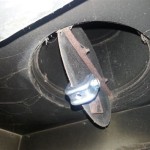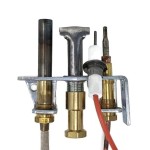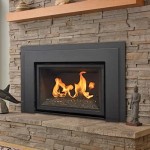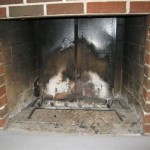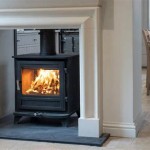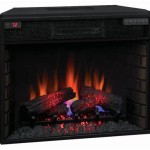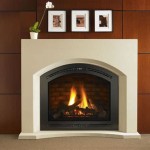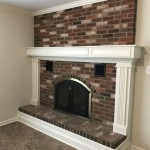How to Vent a Gas Fireplace Through a Wall
Installing a gas fireplace can add warmth, ambiance, and value to your home. However, ensuring safe and efficient operation requires proper ventilation. Venting a gas fireplace through a wall is a common option, allowing for greater flexibility in placement and aesthetic appeal compared to traditional chimney venting. This article will guide you through the process of wall venting a gas fireplace, outlining essential considerations, steps, and safety precautions.
Understanding Wall Vent Systems
Wall vent systems for gas fireplaces work by channeling combustion gases outdoors through a dedicated pipe. These systems typically consist of a vent terminal installed on the exterior wall, connected to the fireplace's combustion chamber via a vent pipe. Vent pipes are generally made of materials like stainless steel or PVC, and they can be either rigid or flexible.
Wall venting offers several advantages over chimney venting:
-
Flexibility:
Wall vents allow for more placement options as they do not require a traditional chimney. -
Cost-effectiveness:
Wall vent systems are typically less expensive to install than chimney venting. -
Aesthetic appeal:
Wall vents can be designed to blend seamlessly with the exterior of your home, enhancing its overall aesthetic.
However, consider the following:
-
Limited distances:
Wall vent systems have maximum length limitations, ensuring adequate airflow and preventing backdrafting. -
Exterior aesthetics:
The vent terminal on the exterior wall may influence your home's appearance.
Choosing the Right Wall Vent System
Selecting the appropriate wall vent system is critical for safe and effective operation. Factors to consider include:
-
Fireplace type and model:
Consult the manufacturer's specifications for compatible vent systems and installation requirements. -
Distance from the fireplace to the exterior wall:
Ensure the maximum length limitation of the vent system is not exceeded. -
Local building codes:
Review local building codes and permits regarding vent system installation.
The vent system should be sized appropriately for the gas fireplace, ensuring sufficient air intake and exhaust. An improperly sized system can lead to insufficient ventilation, combustion issues, and potential safety hazards.
Installation Process for a Wall Vent System
The installation process for a wall vent system involves the following steps:
-
Planning and preparation:
- Determine the vent system location and route.
- Obtain necessary permits and inspection requirements.
- Gather tools and materials: power drill, measuring tape, cutting tools, sealant, screws, etc.
-
Install the vent terminal:
- Choose a location for the vent terminal on the exterior wall. Avoid areas near windows, doors, or other vents.
- Cut a hole in the wall for the vent terminal, ensuring proper clearance from combustibles.
- Secure the vent terminal to the wall using the provided mounting bracket and screws.
- Seal any gaps around the vent terminal to prevent air leaks.
-
Install the vent pipe:
- Connect the vent pipe to the fireplace's combustion chamber, ensuring a tight seal.
- Route the vent pipe through the wall using the pre-determined path.
- Use appropriate connectors and clamps to secure the vent pipe and prevent leaks.
-
Connect the vent pipe to the vent terminal:
- Attach the vent pipe to the vent terminal using the provided connector and clamps.
- Securely seal any gaps or connections to prevent leaks.
-
Test the vent system:
- After installation, conduct a pressure test using a smoke bomb or a specialized vent testing tool.
- Ensure the vent system operates correctly and is free of leaks.
It is highly recommended to consult qualified professionals for installation and testing. Improper installation can compromise safety and void warranties.
Safety Precautions for Wall Vent Systems
Safety should always be paramount when dealing with gas appliances. Follow these essential precautions:
-
Professional installation:
Hire a certified gas appliance technician for installation and inspection. -
Proper ventilation:
Ensure adequate airflow around the fireplace and through the vent system. - Combustible materials clearance: Maintain proper clearance from the fireplace and vent system to combustible materials.
-
Regular maintenance:
Schedule annual inspections and cleaning of the fireplace and vent system. -
Carbon monoxide detectors:
Install working carbon monoxide detectors in your house.
By adhering to these guidelines, you can ensure the safe and efficient operation of your wall-vented gas fireplace for years to come.
Gas Fireplace Venting Explained Heat Glo
Gas Fireplace Venting Explained Heatilator

What Are The Best Ways To Vent A Gas Fireplace Zoroast
Gas Fireplace Venting Explained Heat Glo

Benefits Of Direct Vent Fireplaces

What Are The Best Ways To Vent A Gas Fireplace Zoroast

Fireplace Cover To Keep Cold Air Out

What Is A Direct Vent Fireplace Fireplaces Learning Center

Icc Direct Vent Gas Venting Insulated Wall Thimble
.aspx?strip=all)
Benefits Of Direct Vent Fireplaces Regency Fireplace S
Related Posts

